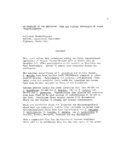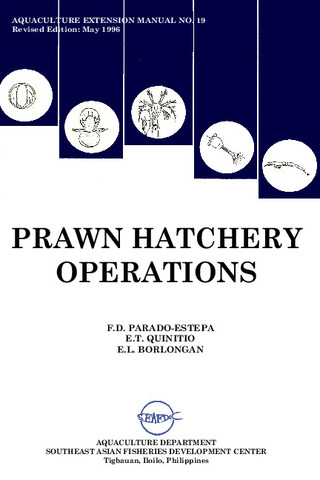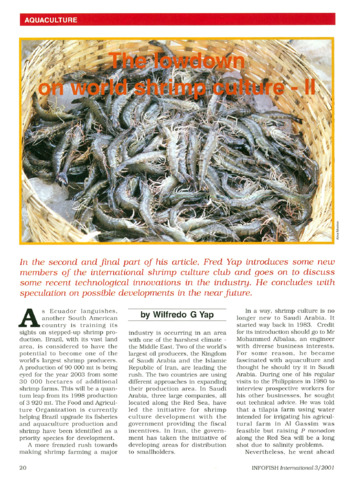Effect of dietary astaxanthin and vitamin A on the reproductive performance of Penaeus monodon broodstock
| dc.contributor.author | Pangantihon-Kühlmann, Maria Paz | |
| dc.contributor.author | Millamena, Oseni | |
| dc.contributor.author | Chern, Yvonne | |
| dc.date.accessioned | 2013-12-16T08:07:44Z | |
| dc.date.available | 2013-12-16T08:07:44Z | |
| dc.date.issued | 1998 | |
| dc.identifier.citation | Pangantihon-Kühlmann, M. P., Millamena, O., & Chern, Y. (1998). Effect of dietary astaxanthin and vitamin A on the reproductive performance of Penaeus monodon broodstock. Aquatic Living Resources, 11(6), 403-409. | en |
| dc.identifier.issn | 0990-7440 | |
| dc.identifier.uri | http://hdl.handle.net/10862/1843 | |
| dc.description.abstract | The reproductive performance of pond tiger shrimp given astaxanthin (100 mg·kg−1) and/or vitamin A (20 000 IU·kg−1) for 61 d in tanks was assessed in a 2 × 2 factorial experiment in a completely randomized design. Tissue carotenoid (total carotenoid; astaxanthin free form. AF; monoester, AM; diester, AD) was analyzed using high performance liquid chromatography. The gonad index (GI) of shrimps fed diets with astaxanthin and/or vitamin A (3.05 ± 0.11 to 3.30 ± 0.17) were significantly higher than shrimps not fed any supplement (2.24 ± 0.17). A significant interaction between astaxanthin and vitamin A for ovarian development and spawning was detected (GI, 3.18 ± 0.14). The ovarian total carotenoid (10.85 ± 1.52 μg·g−1) and astaxanthin (AF, 7.65 ± 1.43 μg·g−1; AM, 0.63 ± 0.12 μg·g−1) content of shrimps fed a diet with astaxanthin supplement were significantly higher than those without. In shrimps fed diets with and without vitamin A, no differences in ovarian total carotenoid (9.38 ± 0.58 μg·g−1) and AF (8.12 ± 1.55 μg·g−1) content were observed except for AM (0.64 pm 0.15 μg·g−1) content. In contrast, the ovarian AD level was significantly higher (1.14 ± 0.3 μg·g−1) in shrimps fed diets with both supplements compared to other diets. A significant interaction between astaxanthin and vitamin A was detected for AD storage. In the hepatopancreas of shrimps fed diets with or without astaxanthin or vitamin A, no significant differences in AF and AM content was observed. On the other hand, the AD (4.92 ± 1.3 μg·g−1) level in the hepatopancreas of shrimps fed diet with vitamin A was significantly higher than those without. These results suggest the involvement of astaxanthin in P. monodon reproduction and its need for inclusion in broodstock diets. Supplementation of vitamin A to broodstock diet of P. monodon appears to enhance its ovarian development and spawning. | en |
| dc.language.iso | en | en |
| dc.publisher | Cambridge University Press | en |
| dc.subject | Penaeus monodon | en |
| dc.subject | Philippines | en |
| dc.subject | Giant tiger prawn | en |
| dc.subject | astaxanthin | en |
| dc.title | Effect of dietary astaxanthin and vitamin A on the reproductive performance of Penaeus monodon broodstock | en |
| dc.type | Article | en |
| dc.identifier.doi | 10.1016/S0990-7440(99)80006-0 | |
| dc.citation.volume | 11 | |
| dc.citation.issue | 6 | |
| dc.citation.spage | 403 | |
| dc.citation.epage | 409 | |
| dc.citation.journalTitle | Aquatic Living Resources | en |
| dc.subject.asfa | breeding stock | en |
| dc.subject.asfa | carotenoids | en |
| dc.subject.asfa | diet | en |
| dc.subject.asfa | feeding experiments | en |
| dc.subject.asfa | food additives | en |
| dc.subject.asfa | ovaries | en |
| dc.subject.asfa | sexual maturity | en |
| dc.subject.asfa | sexual reproduction | en |
| dc.subject.asfa | shrimp culture | en |
| dc.subject.asfa | spawning | en |
| dc.subject.asfa | vitamin a | en |
| dc.subject.asfa | gonadosomatic index | en |
| dc.subject.scientificName | Penaeus monodon | en |
Files in this item
| Files | Size | Format | View |
|---|---|---|---|
|
There are no files associated with this item. |
|||
This item appears in the following Collection(s)
-
Journal Articles [1256]
These papers were contributed by Department staff to various national and international journals.




